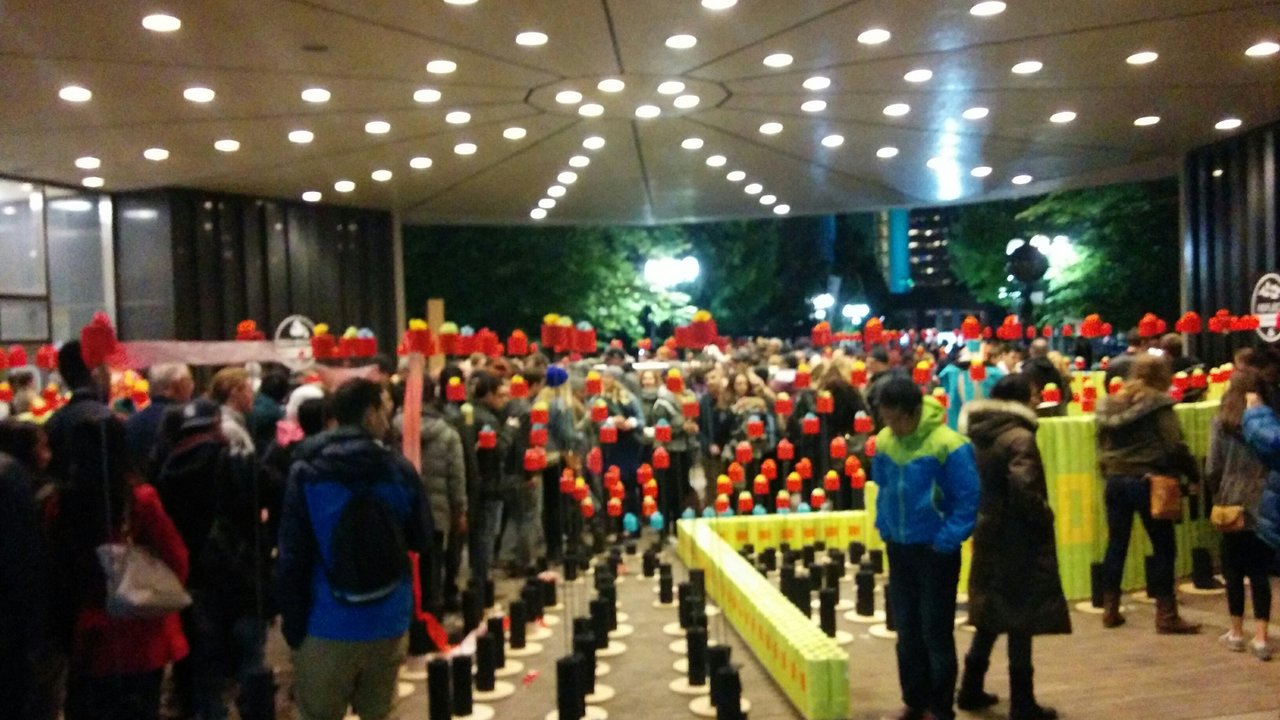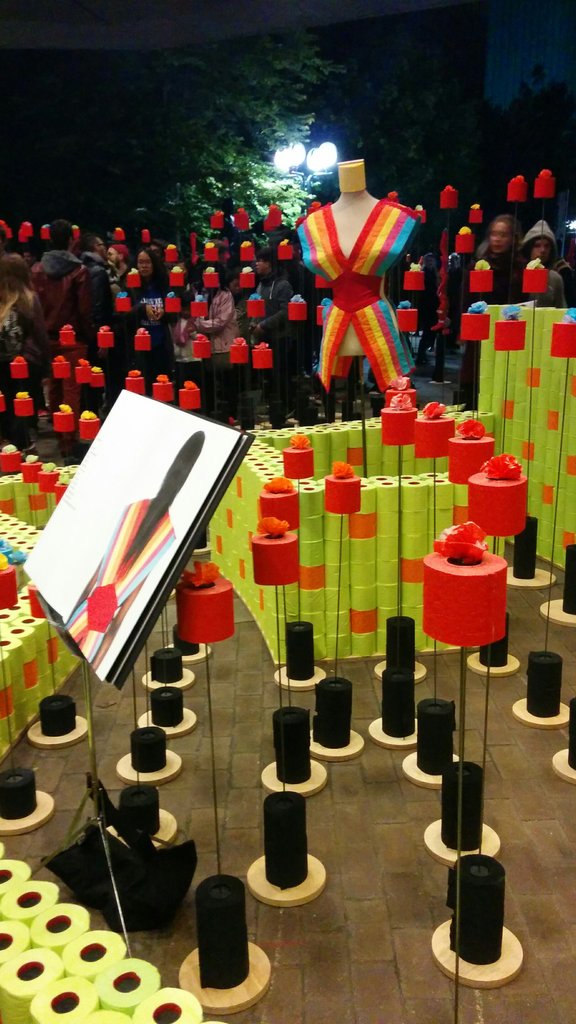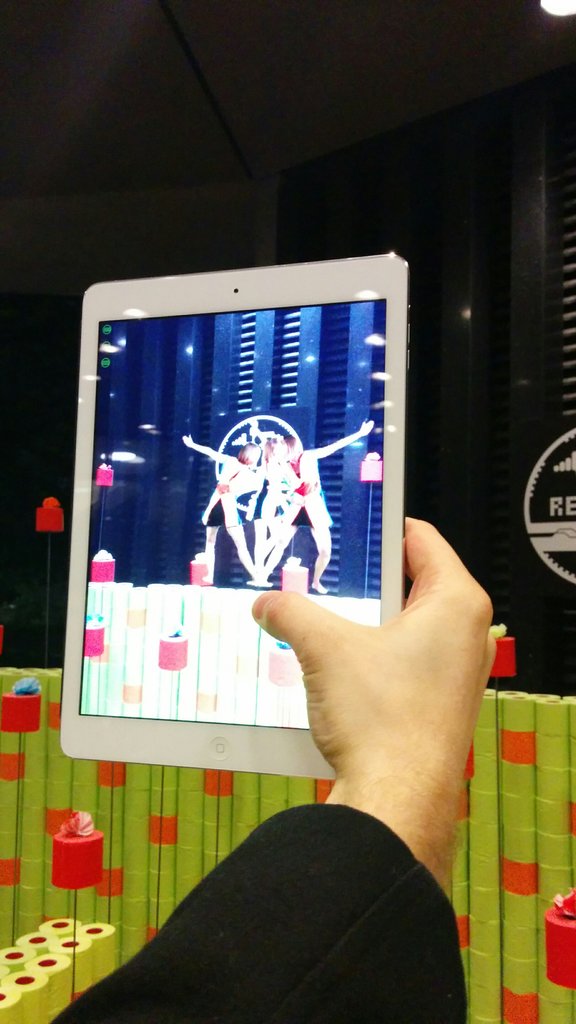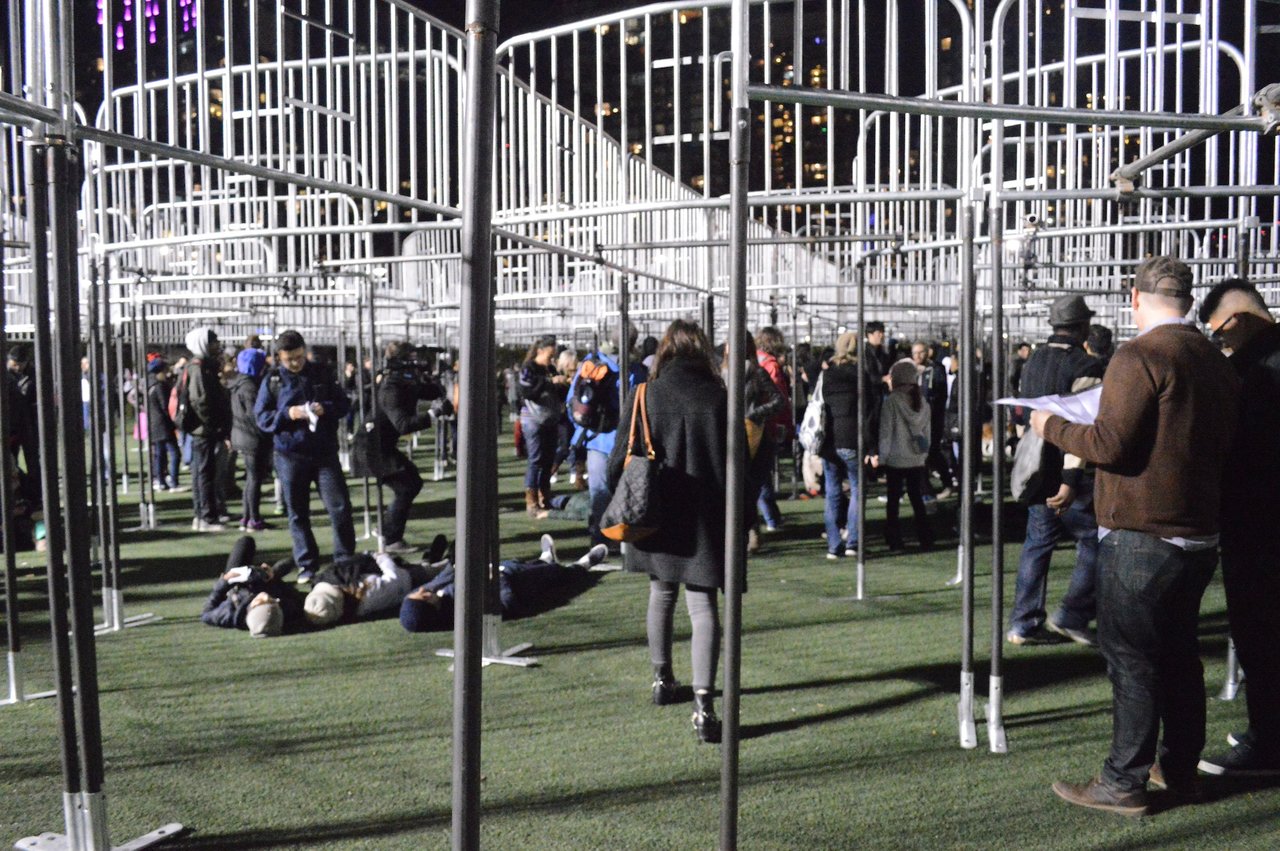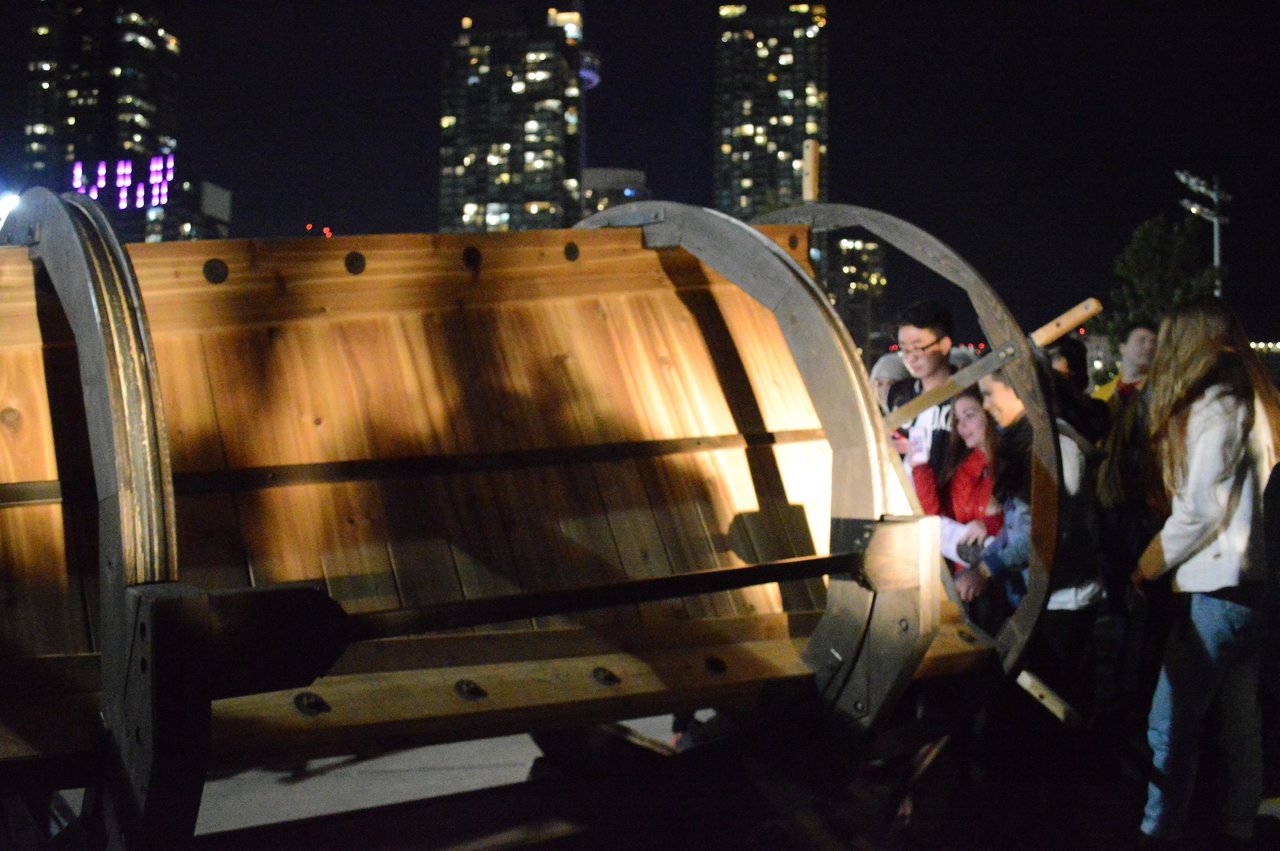October 4, 2014 from sunset to sunrise
Garden of Renova by Luigi Ferrera
Osgoode Rotunda, 361 University Avenue
Luigi Ferrera, the Dean of George Brown College’s Center for Art and design partnered up with Renova—a colored toilet paper company— to create an outdoor garden of color and fashion for Scotiabank Nuit Blanche 2014. Underneath Osgoode Hall, Ferrera assembled a “temple-like” labyrinth of coloured toilet paper into beautifully arranged towers and floral arrangements, which is said to be modeled after various sacred spaces. In the centerpieces of these gardens stood water fountains and paper outfits.
Some members from George Brown communicated with the public by presenting an interactive online element of the art installation. By using a technology called Augmented Reality, participants were able to see the centerpiece costumes come to life on an Ipad. Once the Ipad hovered over certain parts of the installation, videos of dancers wearing the costumes appeared. The Garden of Renova allowed to broke the boundary between installation artwork and online integrated media and wowed audiences of all ages.
Text and photo: Ella Gorevalov
Fort York Area
Nuit Blanche, the annually held, over-night arts festival, has come and gone for another year. This year, in an attempt to move away from the throngs of on-lookers that generally gather in the downtown core, I decided to branch out and visit some of the installations that were set up in the Fort York area. While the crowds felt just as heavily populated as they would have been on Yonge Street or Queen West, they weren’t quite as densely packed, meaning it was relatively easy to move from one installation to the next.
First on the docket was Yoan Capote’s Open Mind, which was a large, open framework of metal scaffolding that claimed to make up an image of the human brain when viewed from above. The piece itself was situated in a brightly illuminated field at 95 Fort York Boulevard, otherwise known as Canoe Landing Park. To be honest, I was disappointed with Open Mind because the write up in the exhibition booklet led me to believe that the installation was going to be a literal maze: a space for visitors to walk into and get lost in, before allowing them to reflect on the experience of doing so. In reality, I was presented with a field of drunken strangers, all of whom were wandering aimlessly under a ceiling of welded metal structures that reminded me more of a construction site than a representation of the human brain.
After moving on from Open Mind, I stopped by David Squared’s interactive installation Kaleidoscopic and Antoni Muntadas’ Good News, both of which I liked because they lived up to my expectations, were easily accessible, and instantly gratifying in their own ways. Kaleidoscopic was installed only a few hundred meters from Open Mind, and was simply a scaled-up, functioning model of a children’s kaleidoscope toy. It could be shifted and rotated by visitors to create interesting optical patterns, although some people chose to just climb inside the piece itself and stay there. Good News was an endlessly scrolling marquee of international news headlines that had been taken from their original context and arranged in a new format in order to critically examine media bias and manipulation. Once it was pointed out to me, Good News was hard to miss, although I did come close to passing by it all together when I walked past its installation site at the Fort York branch of the Toronto Public Library.
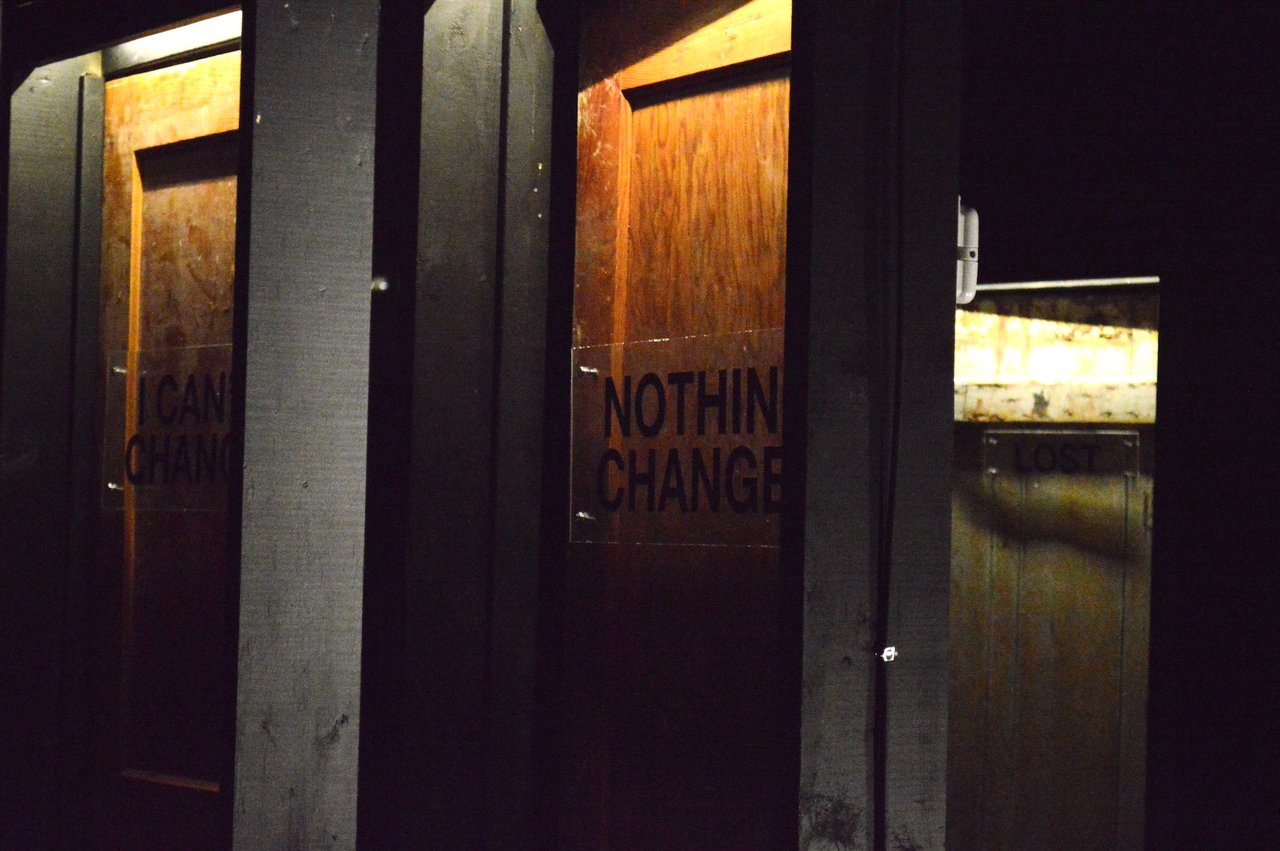 Between Doors by Labspace Studio’s John Loerchner and Laura Mendes
Between Doors by Labspace Studio’s John Loerchner and Laura Mendes
The last piece I took in was Between Doors by Labspace Studio’s John Loerchner and Laura Mendes. Located in the heart of the Fort York National Historic Site, Between Doors was easily my pick of the night, as every facet of the work felt well considered and executed. Nothing about the piece felt ostentatious or flashy, it was simply row upon row of free standing wooden doors, arranged in sets of two or three, and each individual door was then labeled with a phrase. Audience participation was encouraged, and so a line had formed around the installation fence. Participants entered one by one and stepped through the door of their choosing, each new set of doors presented a new set of choices. Those who chose not to participate had the opportunity to watch on as each set of decisions was tallied, charted, and graphed, before being projected on a screen located behind the last grouping of doors. Between Doors managed to succinctly examine the notion of free will and decision making, meaning the intention of the artists remained intact instead of buckling under the pressure of an event that drew in a crowd of thousands, making it one of the strongest installations of the night.
Text: Madeleine Till. Photo: Anthony Tran

